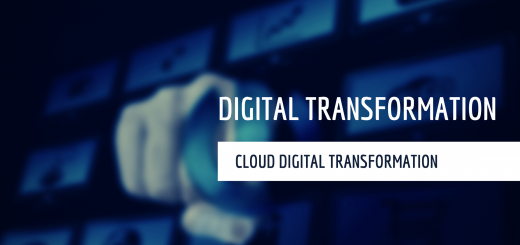How COVID 19 is shaping Digital Transformation?

Digitization has been a buzzword for the past several years. Digital technologies have made their indelible ink on several services. It has made our lives much easier and fast.Before the onset of the pandemic, many businesses, though acknowledged the potential of the latest digital and other disruptive technologies, were largely reluctant to embrace it.
The out of the blue changes brought about by the pandemic in the business landscape forced many of these businesses to adopt digitization technologies.According to a WNS survey, all the respondents opined that they aimed to adopt a remote or partially remote working model. About 97 percent of the respondents have already begun delivering on digital transformation strategies.
Digital transformation involves the adoption of digital technologies by an enterprise with an ultimate aim to improve productivity, value, and efficiency. Digital transformation can be seen as a socio-cultural and technological transformation.
Digital transformation emphasizes adopting and deploying the best combination of technologies that intends to transform the organizational structure while ensuring that these are in line with future requirements. Any business that turns its back to digital transformation is destined for failure and faces the risk of becoming redundant.
Let us now move on to see how COVD 19 stimulated the adoption of technologies and how it affected the functioning of various services.
COVID 19: How it Speed Up The Adoption of Various Technologies?
1) Automation
In this fast-paced digitalized world, where technology changes with breakneck speed, customer expectations are also bound to change quickly. According to a consumer survey report, Indian consumers have become tech-savvy and convenience seekers.
They also have evolved to be socially conscious amidst induced social distancing and resultant isolation. Even the most technophobic customers are embracing online and contactless services. This has driven businesses to adopt automation solutions.
Automation solutions can help brands to manage A to Z of activities like inventorying, governance, and other day-to-day operations. Automation can drastically cut down the requirements for human supervised monitoring.
Instead of spending their time and energy on repetitive and mundane tasks, automation solutions can help human personnel to dedicate their time and energy to other important tasks.
2) Adoption of Cloud Technologies
Even before the onset of the pandemic, cloud adoption was considered a revolutionizing technology. The pandemic made cloud adoption one of the trending hotcakes. Cloud technology is one of the forefront drivers of digital transformation.
A cloud-based work solution facilitates easy scalability and on-demand provisioning of resources like storage, compute, networking, etc. Cloud solutions facilitate easier and faster collaboration among the various teams. The mobility offered by the cloud solutions enables easier and on-the-fly access to applications.
This ensures that employees can access the proprietary applications of an organization from any device provided that they have privileged and authorized access. Thus organizations that have embraced the cloud can adapt work practices based on remote and hybrid cultures.
It is imperative to adopt technologies based on the cloud that acts as a catalyst towards a successful digital transformation. Digital transformation through cloud transformation is a matter of survival as far as enterprises are concerned.
3) Non-Contact Technologies
The COVID pandemic has paced up the emergence and adoption of intangible technologies that can eliminate direct contact with an object. The prevalence of these technologies started when the pandemic emerged and people at large were encouraged to avoid getting in direct contact with an object.
For instance, the pandemic period saw many organizations adopting technologies based on digital payment solutions, automatic open-close doors without any handles, usage of one-time password systems instead of physical signatures or any biometric identity, non-contact faucets, etc.
4) Mobile-First Technology
The COVID pandemic has paced up the adoption of mobile technologies. Customers, no matter what their financial status is, are now increasingly becoming dependent on mobile platforms and handheld devices.
With the workplace and educational institutions getting manifested through mobile devices, people all around the world have started to increasingly adopt mobile platforms. Most of the applications in today’s world are designed with a perspective to offer the best experience to mobile users.
The pandemic times largely saw the emergence of self-service in a bid to minimize human interactions. Most of the services, be it a mass transit system or a public eat-out system are providing such self-service options to the users and customers that employ a digital or mobile key to do anything and everything like automatic checkout, unlock a door, etc all through a smartphone.
5) Artificial Intelligence
Digital transformation is more about experience and convenience. The COVID 19 pandemic saw the adoption of disruptive technologies like Artificial intelligence (AI). The adoption of AI technologies like chatbots, recommendation engines, and automated assistants has seen a huge surge. AI capabilities have been extensively deployed for decision-making.
Virtual assistants that deploy Natural Language Processing (NLP) capabilities can handle customers who speak different languages and can be used to dig into the information much more than what a human agent could. These technologies provide the best insights to an organization as well as provide the best engagement and experience to the customers.
COVID 19 and Digital Transformation: Impacts on Customer Service, Education, Health Care, and Financial Services
1) Customer Service
Most of the businesses were faced with a deadlock situation during the pandemic as they found it increasingly difficult to get accustomed to the new environment.
With the pandemic-induced remote and hybrid work cultures, most of the enterprises were required to revamp their organizational structure for offering a better experience to the customers. The operations of the customer services have now become remote and are no longer confined to a brick and mortar structure.
Though the emergence of the latest work cultures has enabled organizations to get around the need to make any lump sum investments for reserving in-house employee infrastructure, remote customer service operations demand the deployment of digital technologies. Therefore it is important to ensure that employees have the best access to the proprietary applications and solutions of a business to help them in their endeavor to provide the best experience to the customers.
2) Educational Sector
Even though digitization technologies and solutions were well advanced and accessible even before the pandemic, the education sector was one of the few areas that did not see large-scale adoption and implementation of digital transformation practices. This was largely driven by the belief that a physical classroom is the best way to impart education and foster the relationship between a student and a teacher as well as the interrelationships among the students.
However, the pandemic changed everything. Imparting education through physical classrooms was no longer possible. This made the adoption of digital transformation a matter of critical importance as far as continuous and comprehensive education was concerned. The digital transformation could pave the way for a unified approach to imparting education to students no matter where they are.
This has enabled better accessibility of the educational materials and contents. The digitization of technology has enabled better personalization by imparting the lessons according to the way a student prefers. Most of these online education solutions use capabilities based on Artificial Intelligence (AI) that lets instructors and teachers provide contents that are personalized according to the needs of a student.
3) Remote Health Care Services
The COVID-19 pandemic has had its ripples in the healthcare sector too. Prior to the pandemic, the full embracement of digital technologies has remained an elusive goal as far as healthcare services were concerned. The pandemic however provided a good amount of reasons for healthcare services to embrace digital technologies.
The pandemic raised the need for quicker responsiveness and efficiency as far as the healthcare service providers were concerned. The embracement of digital technologies has paved the way to smart healthcare solutions that enable real-time analysis of heart rate, blood pressure, etc.
Nowadays we have smart wearable devices that provide instantaneous monitoring of several health parameters which can be fed to doctors and other healthcare experts and thus facilitate the way to instant monitoring and diagnosis. The pandemic has resulted in the emergence of telemedicine services that deploys cloud and other digital solutions to provide remote consultation services to patients.
Telehealthcare services thus enabled patients to get around the need to make in-person appointments with the doctor. This proved to be a game-changer amidst the pandemic as patients, especially the elderly ones could consult doctors sitting from the comforts of their homes. Digital transformation also paved the way to easy management and administration of the day-to-day activities of healthcare service providers. Solutions based on the cloud can provide centralized management of the various workloads and information related to patient management and other allied services.
4) Financial Services
Digital transformation is reshaping functionalities related to accounting and finance. Most of the financial services are stepping up their digital initiatives. According to the study ‘Digital Financial Services Usage’ by IFEC, about 75 percent of the participants said that they used some digital financial services in the last year.
The pandemic accelerated the emergence and adoption of digital banking services based on mobile and internet banking and other doorstep banking solutions. Customers can easily open an account, take a loan, and check their balance from their home itself.
Blockchain is a technology that has immense potential for transforming financial services. Technologies based on blockchain are paving the way to the digital currency that can facilitate faster payments and provide greater transparency that instills better trust in the customer. Such solutions can also pave the way to greater financial and monetary security.
Conclusion
Digital transformation has become a linchpin requirement in today’s business world. With pandemic-induced remote work, culture becoming more prevalent and customers becoming more tech-savvy it is of utmost importance to embrace digital transformation in the pursuit to offer the best engagement and experience to the customers.
As part of digital transformation services, we provide application modernization, cloud migration, and enterprise mobility solutions. Jumpstart your digital transformation journey using our cloud migration services. Our application modernization services help you improve the performance and efficiency of your applications. We help you improve enterprise mobility by providing capabilities based on AI and other automation solutions.


